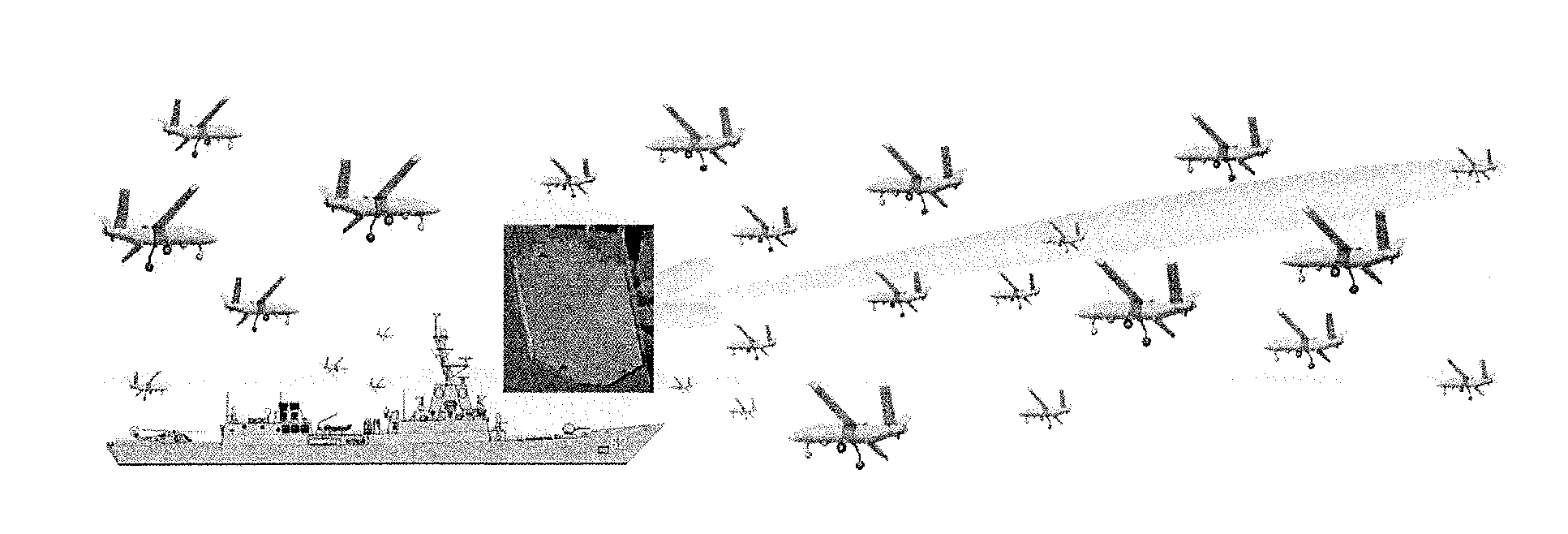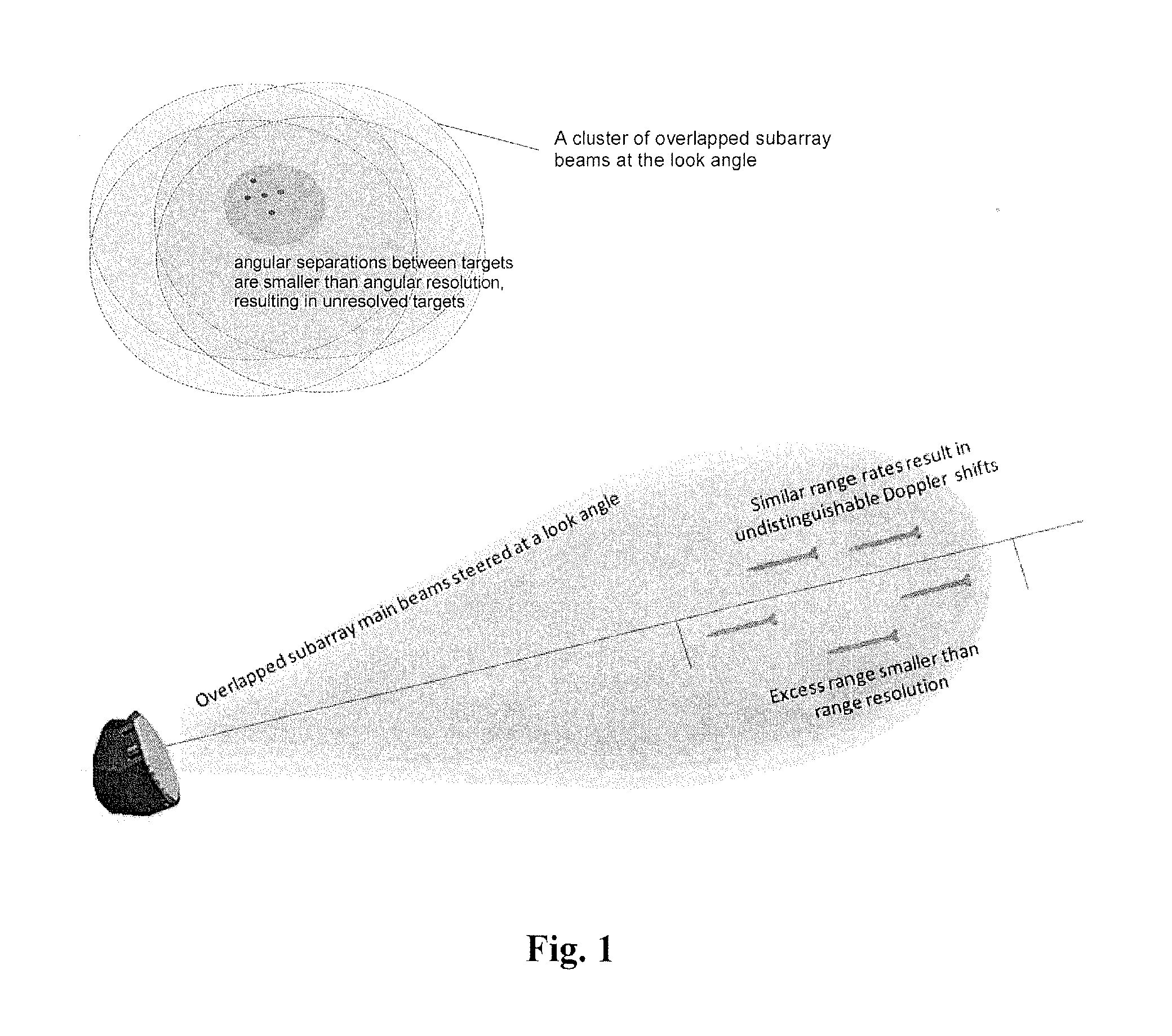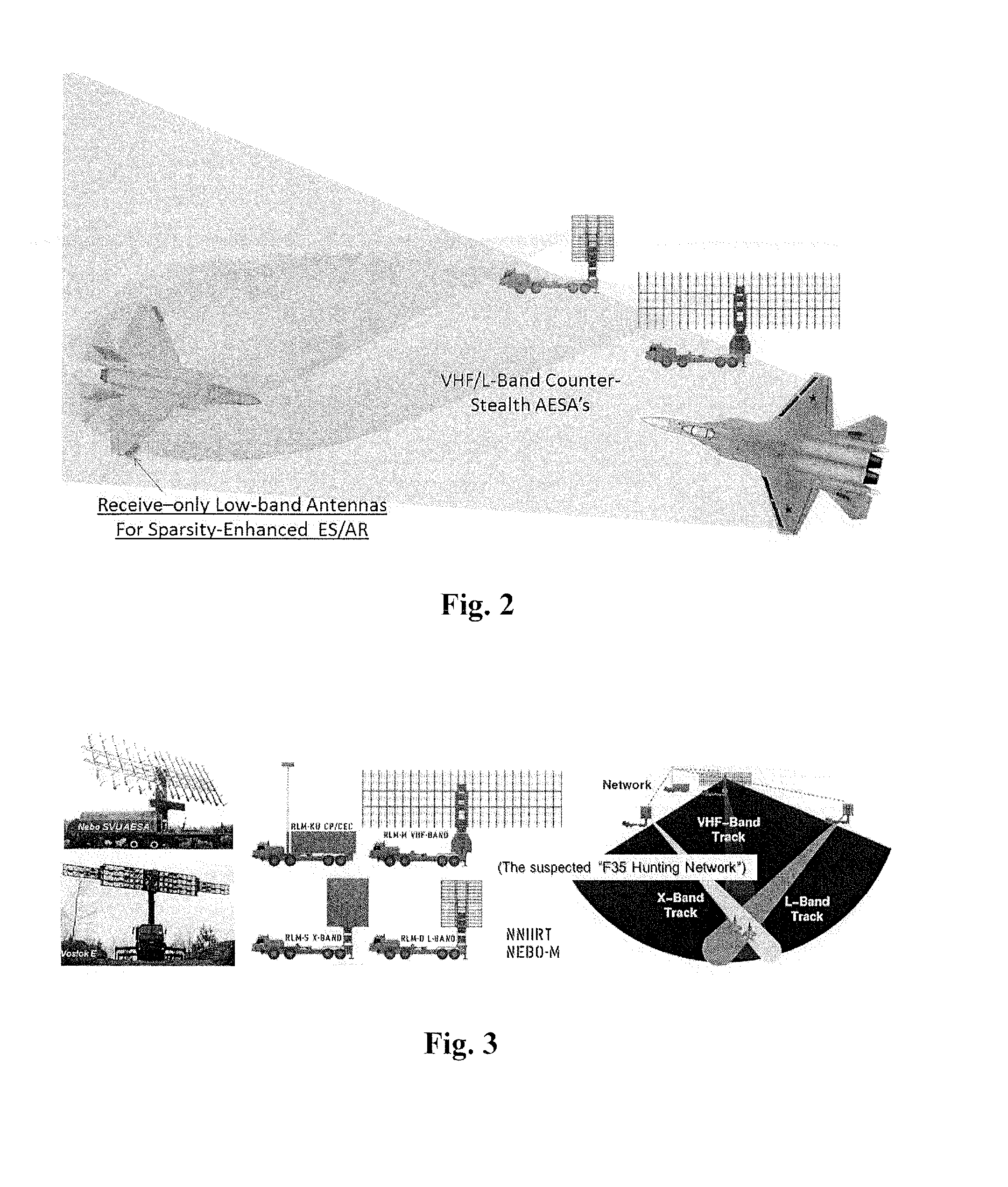Sensor system and method for determining target location using sparsity-based processing
- Summary
- Abstract
- Description
- Claims
- Application Information
AI Technical Summary
Benefits of technology
Problems solved by technology
Method used
Image
Examples
Embodiment Construction
[0067]The system and method of the present invention uses a sparse representation framework, which hereinafter is referred to as sparsity-based processing, ruining on one or more computers of a sensor system, to enhance target location estimation capabilities of the sensor system for one or more targets. The sparsity-based processing of the system and method of the present invention even enables enhanced target resolution performance for closely spaced targets in environments rich in multipath interference. Recent breakthroughs in sparsity-based estimation theories, which is a sister discipline to compressive sensing, are employed in the sparsity-based processing of the system and method of present invention to resolve angular and temporal ambiguity in the received signals caused by coherent interference, improve angular resolution accuracy of the received signals, and estimate a location for targets with potentially an order of magnitude improvement in resolution accuracy and perfo...
PUM
 Login to View More
Login to View More Abstract
Description
Claims
Application Information
 Login to View More
Login to View More - R&D
- Intellectual Property
- Life Sciences
- Materials
- Tech Scout
- Unparalleled Data Quality
- Higher Quality Content
- 60% Fewer Hallucinations
Browse by: Latest US Patents, China's latest patents, Technical Efficacy Thesaurus, Application Domain, Technology Topic, Popular Technical Reports.
© 2025 PatSnap. All rights reserved.Legal|Privacy policy|Modern Slavery Act Transparency Statement|Sitemap|About US| Contact US: help@patsnap.com



